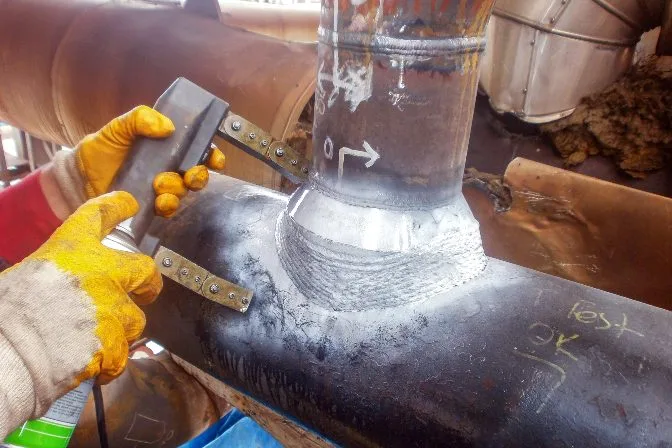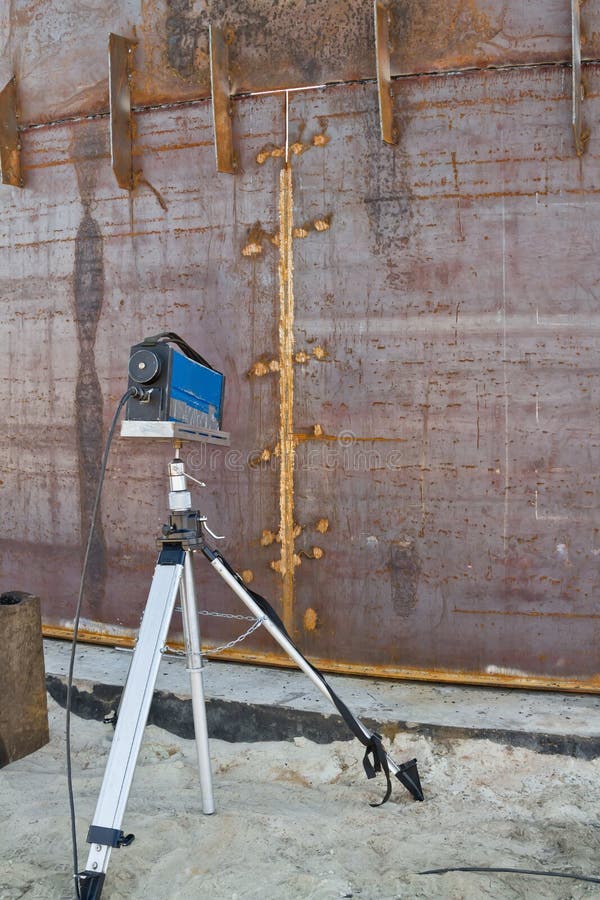Tank Welding Inspection: Making Certain Long-Term Toughness and Safety
Tank Welding Inspection: Making Certain Long-Term Toughness and Safety
Blog Article
Comprehensive Overview to Effective Storage Tank Welding Assessment Techniques and Ideal Practices for Quality Guarantee
In the world of storage tank welding, rigorous examination methods are paramount for safeguarding structural integrity and making certain compliance with sector guidelines. This overview presents an organized strategy to numerous evaluation methods, including visual assessments and non-destructive screening, which play an essential duty in discovering flaws before they escalate right into major issues. Furthermore, the relevance of precise paperwork and the application of continuous renovation techniques can not be overemphasized. As we check out these crucial parts, it ends up being clear that a proactive inspection strategy is not just helpful, yet necessary for functional success in environments handling harmful products.
Importance of Storage Tank Welding Examination

Storage tank welding evaluation acts as a preventative step, recognizing potential flaws such as fractures, porosity, or incorrect joint penetration before they intensify right into major issues. Routine assessments not only comply with sector policies and standards yet also boost the durability of the tanks, minimizing the need for pricey repair services or substitutes.

Visual Inspection Strategies
Using organized aesthetic inspection strategies is essential for analyzing the high quality and stability of welded joints in containers. This approach functions as the first line of protection in determining potential flaws such as cracks, undercuts, and not enough infiltration. The inspector must come close to the task with an eager eye, utilizing ideal tools like multiplying glasses, flashlights, and mirrors to enhance presence.
Throughout the examination process, the inspector ought to review the weld account, ensuring it adheres to specified standards and guidelines (Tank Welding Inspection). This consists of analyzing the bead width, elevation, and blend with the base material. Assessors must likewise pay attention to the surrounding locations for signs of thermal distortion or contamination that may influence the weld's efficiency
Documents of searchings for is vital; assessors ought to tape-record any type of anomalies, classifying them by severity for additional examination. This systematic method not just aids in instant defect identification however additionally adds to long-term quality control by making sure conformity with industry criteria. Regular training and calibration of aesthetic inspection methods further boost the integrity of analyses, inevitably leading to more secure and more resilient tank frameworks.
Non-Destructive Evaluating Techniques
Non-destructive screening (NDT) methods are often used in tank welding assessments to examine the stability of bonded joints without jeopardizing their structural honesty. These techniques are crucial for identifying issues such as splits, spaces, and incorporations that can lead to catastrophic failings if left unnoticed.
Typical NDT techniques consist of link ultrasonic testing (UT), which utilizes high-frequency sound waves to identify internal imperfections; radiographic testing (RT), employing X-rays or gamma rays to imagine weld frameworks; and magnetic bit screening (MT), which exposes surface area and near-surface interruptions in ferromagnetic materials (Tank Welding Inspection). Liquid penetrant testing (PT) is also commonly made use of, qualified of detecting surface-breaking issues by using a fluorescent or shade comparison color
Each NDT approach has its details applications and benefits, making it vital for assessors to choose the ideal method based upon the product and the type of weld being evaluated. The assimilation of these NDT methods into the examination procedure enhances the total high quality guarantee structure, making certain that bonded storage tanks satisfy security and performance requirements. Inevitably, NDT plays a vital duty in keeping the stability and longevity of container frameworks in various commercial applications.

Paperwork and Reporting
Making certain comprehensive paperwork and coverage throughout storage tank welding evaluations is crucial for keeping conformity with sector requirements and facilitating efficient communication amongst stakeholders. Proper documentation works as a thorough document of examination tasks, searchings for, and any type of rehabilitative actions taken throughout the welding procedure. This details is necessary not just for quality control but additionally for audits and regulative reviews.

A well-structured examination report should consist of information such as the date of evaluation, names of inspectors, welding procedures utilized, products used, and any kind of inconsistencies from established requirements. Additionally, pictures and representations can improve the clearness of the record, providing aesthetic context to the searchings for. It is likewise vital to document any non-conformities in addition to their resolution, ensuring that all stakeholders are informed of possible dangers and the actions taken to mitigate them.
Furthermore, keeping a central data source for all evaluation records allows for very easy retrieval and review, cultivating a society of transparency and liability. By prioritizing careful paperwork and coverage, organizations can not only copyright quality control yet likewise reinforce their track record within the industry, ultimately leading to enhanced safety additional reading and operational efficiency.
Continual Renovation Practices
Constant improvement techniques are vital for boosting the top quality and effectiveness of storage tank welding examinations. One effective approach involves regular training and upskilling of evaluation employees to stay abreast of the most recent welding innovations and criteria.
Moreover, making use of data-driven evaluation enables organizations to track evaluation outcomes, recognize trends, and identify areas for enhancement. Using devices such as source evaluation can help in recognizing the underlying issues causing defects, making it possible for targeted interventions. Furthermore, obtaining responses from evaluation teams and stakeholders creates a joint environment that urges innovative options.
Integrating sophisticated modern technologies, such as automated inspection systems and real-time surveillance, can substantially boost the precision and speed of examinations. Normal audits of the inspection procedures also contribute to a culture of liability and constant refinement. Eventually, these continuous enhancement techniques not just elevate the high my blog quality of storage tank welding evaluations however additionally add to overall functional quality and customer complete satisfaction.
Verdict
In verdict, efficient container welding assessment is essential for making sure the structural integrity and safety of storage systems, particularly those taking care of dangerous materials. Utilizing a mix of visual assessment techniques and non-destructive screening techniques promotes the very early recognition of problems, thereby preserving compliance with industry standards. Additionally, robust documents and a dedication to continuous improvement enhance quality control techniques. Ultimately, these measures add considerably to functional excellence and the avoidance of prospective security dangers.
Report this page